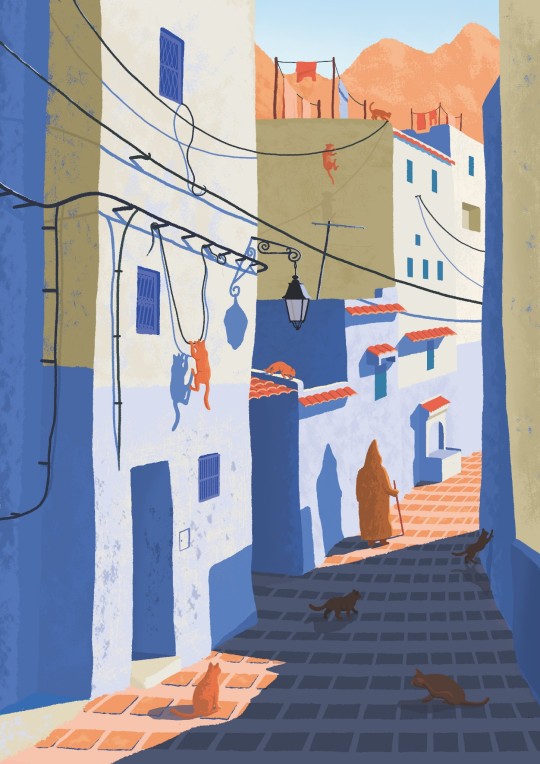#Chefchaouen cats
Text

8 notes
·
View notes
Text




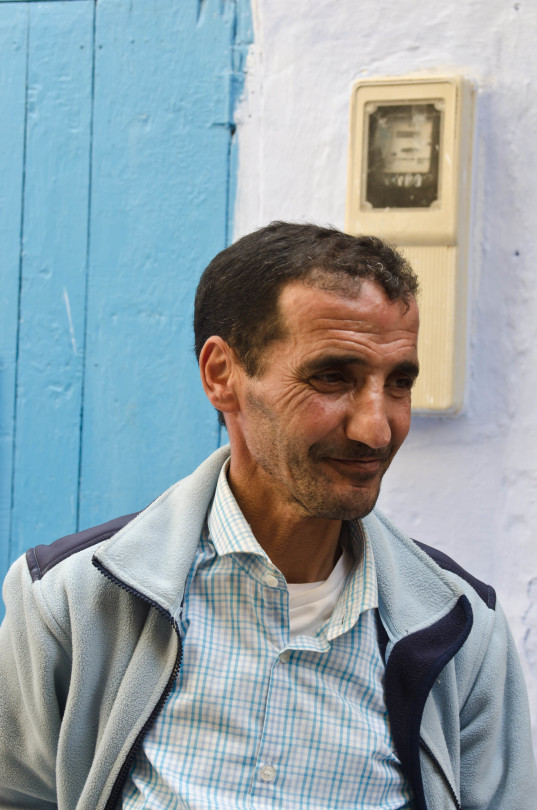
Chefchaouen (2) (3) (4) (5) by hey tiffany!
#archway#roaming the streets#around the neighborhood#stairs#cats#doorways#people#human subject#morocco#chefchaouen#chaouen
0 notes
Text
Chefchaouen, The Blue Pearl Of Morocco

View On WordPress
#Blue city#Blue Pearl#Cats#Chefchaouen#independent travel#Medina#Mint tea#Moroccan doors#Morocco#Muezzin#Travel journalism#travel photography
0 notes
Text

Maroc, Region du Rif, Ville de Chefchaouen, La medina bleue, chat des rues // street cat © Tuul et Bruno Morandi
by Tuul et Bruno Morandi
58 notes
·
View notes
Text
Madrid Week 13: Chefchaouen and Reflections on My Role in Tourism (Morocco, part 2)
Hola a todxs! Niko back here with week 12/13/14 of studying abroad in Madrid, honing in on Chefchaouen in the second part of the Morocco blog. Last time I focused on cultural experiences and my thoughts on tour groups. This time I’ll talk about Chefchaouen itself, and discuss some research I was compelled to do on tourism. Let’s get into it.
It Really is Quite Blue
Chefchaouen (or Chaouen for short, if you’re a cool cat) is known as the “Blue Pearl” of Morocco, and one glance at any photos of the small town (42,000 population) explains why. The historic center, the Medina, of the city is painted almost entirely blue. In combination with the maze-like feeling of the streets and the intense palette of the greenery (from the numerous orange trees) and vibrant colors (rugs, scarves, spices, more), the city was breathtaking at every turn. The architecture has Andalusian (Southern Spanish) and Arabic influence. Combined with its location nestled at the foot of the Rif mountains and the low clouds hiding their peaks from view, it felt like we were on the set of a movie. Per usual, my pictures don’t do the place justice. Combined with the amazing natural beauty and hiking surrounding the town, I highly recommend working it into your itinerary if you’re going to Morocco anytime soon.
So, why is the city blue nowadays? There are a ton of legends surrounding the blueness (mosquito repellent, keeps the city cool, etc…), and none of them are true. Our tour guide Mohammad, a local who’s writing a thesis on the subject, conducted interviews with locals around the town to track its history, and shared what he found with us.
Blueness in the city architecture dates back to the 1500s, when Jews would paint their doorways and windows blue to signify that their home was a safe place for others in the Jewish community. However, the Jewish quarter was small, and the last Jews in Chefchaouen moved to Israel in the mid 1900s. At this point, Chefchaouen remained a largely white-painted city — until 2005. For some reason (unbeknownst to Mohammad), people started painting their houses blue again. The phenomena proliferated throughout the city, soon transforming into tradition that continues to the present day. Over time, tourism in Chefchaouen snowballed to new heights, and that’s exactly why the city continues the upkeep of their blue city today: its unique facade brings in the money that the city depends on to survive.

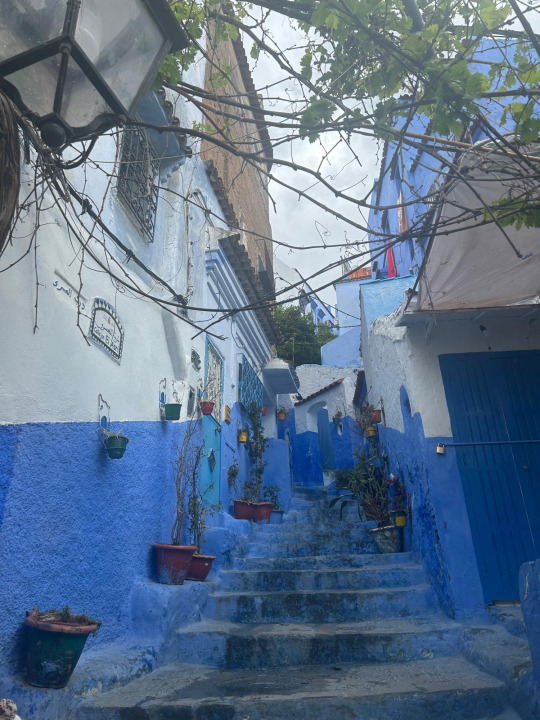
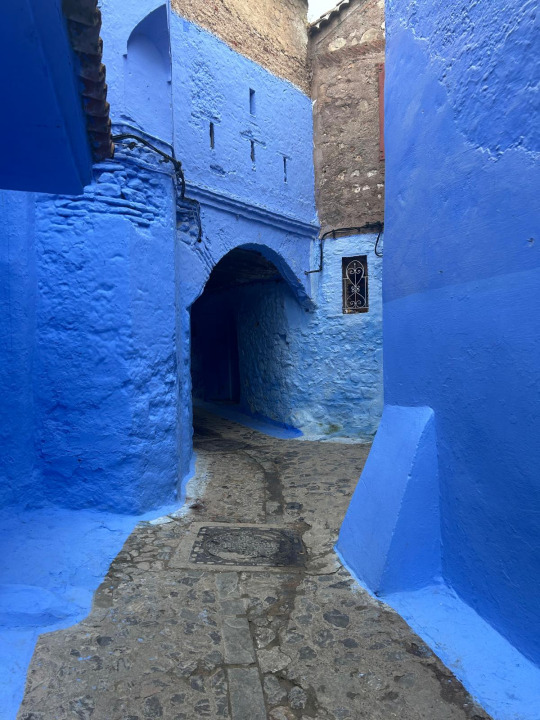

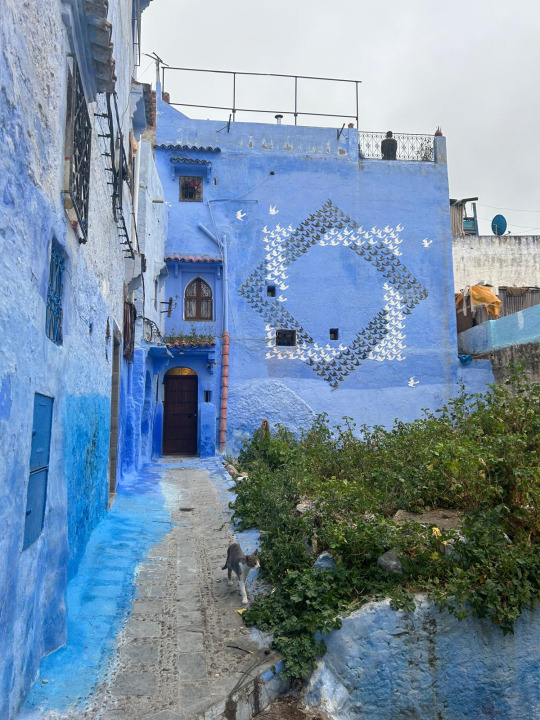
A Tourism Economy
Without its blue exterior, it wouldn’t have such an outstandingly unique draw compared to other Andalusian-Moroccan cities. Within the past few years, it has transformed into an internationally renowned tourist destination, which I think is rooted in its shareability on picture-based social media like Instagram. Chefchaouen is incredibly photographable; It looks great on a feed (as it did on mine, too). Now, Chefchaouen’s local economy depends heavily on tourism, which is both a blessing and a curse.
Tourism has brought a great deal of money to Chefchaouen that simply did not exist in years prior. The economy has grown: on average, people have more money, and the city’s infrastructure is more developed. More tourism = more money = better quality of life, right?
Not necessarily, and I think that much is obvious too. Economic growth that comes from an increase in tourism is accompanied by gentrification and inflation that outpaces the rise in wage of a city’s local inhabitants, leaving tourist hotspots unaffordable for the people that live there. Notably, many property owners convert apartments with reasonable rent into Airbnbs and hotels that significantly increase their profit (in turn increasing rent of actual apartments in the area, too), making it difficult for locals to live in the same neighborhoods they grew up in. Mohammad feels this especially — he’s getting married within the year and is having trouble finding a home in which he can start a new family.
In addition to gentrification, economic dependency on tourism can also impede the economic growth of a community in the long term, if it’s not managed sustainably. When tourism is disrupted significantly in these regions, this can have huge negative effects — something we saw precisely during COVID (including in Chefchaouen, seen in this article). Diversified economies are much more resilient to these kinds of sudden changes.
As an industry, tourism also provides fewer avenues for innovation and development when compared to sectors like healthcare, engineering, or even entertainment. There is a finite amount of attractions, services, and space that can be economically developed, especially when it comes to historic or natural attractions. Economic growth will plateau at a much quicker rate than, for example, an economy rooted in manufacturing, which can improve margins through many avenues — new products, more efficient processes, etc. This Youtube video gives an interesting overview of this concept, and goes into more depth with ample statistics and examples. I find his arguments a bit one sided, but they gave me a lot of new things to think about.
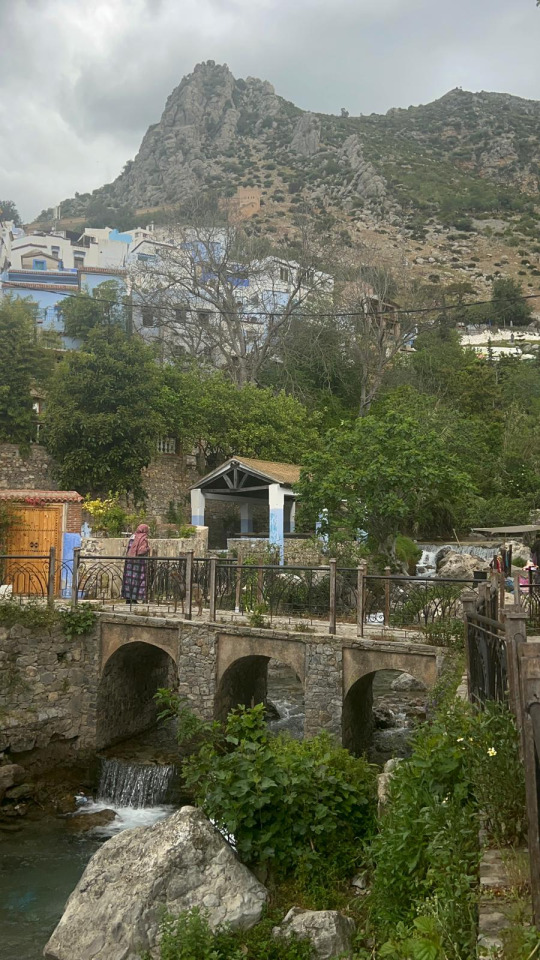

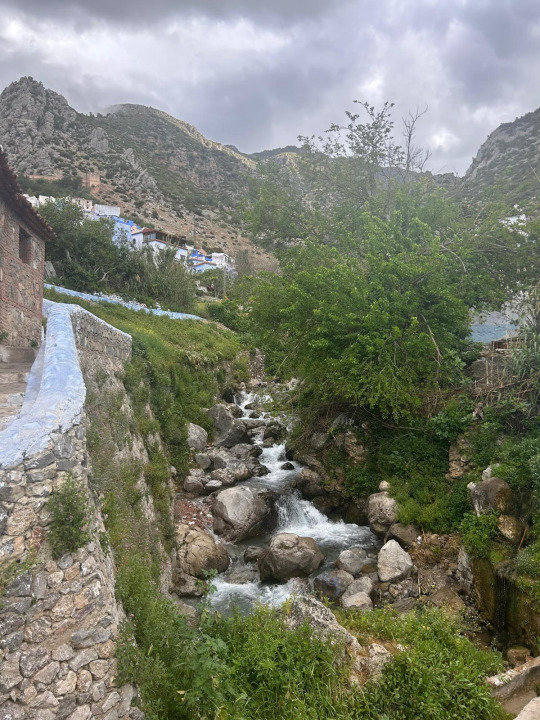
Over-tourism
Aside from inflation and gentrification, an unsustainable rise in tourism is also accompanied by increased pollution, overuse of local resources, and — what has been most apparent from my travels thus far — overcrowding.
The most significant example of overcrowding I experienced was in Cinque Terre, which I wrote about briefly in week 10. Because my friend and I went during Easter weekend, tourism was at an all time high, and it kind of stripped the magic away from what was once a peaceful beach town. By midday, it was difficult to move on main streets due to the mass of people filling the area, making the experience somewhat unpleasant. Don’t get me wrong, it was still absolutely stunning — but the experience was slightly dimmed, especially carrying the understanding that I was part of the problem. If I felt like this as a tourist, I could only imagine how the people that grew up in these areas feel, observing their favorite restaurants, plazas, and viewpoints become oversaturated and changed by international influence.
I felt similar in Florence. Any site near the center was crowded (insanely long lines at every attraction), and in certain areas, I barely heard any Italian being spoken. Chefchaouen was crowded, but not unbearable. However, we were at the beginning of the tourist season. Come July/August, the streets would be filled just the same.
In small destinations like Cinque Terre, Chefchaouen, and Florence, you feel directly the impact of tourism. The proportion of tourists to local residents is imbalanced, which gives rise to the yucky ‘touristy’ feeling that can sometimes feel impossible to avoid. However, the same issue arises in big cities, like Madrid. Although tourism in Madrid is concentrated in a few central neighborhoods, it also leaks into other parts of the city (especially due to tourists — like myself — who are constantly seeking a more ‘local’ feeling in their travels).


When I asked one of the directors of my study abroad program (Miguel, a Spaniard born and raised in Madrid) how he felt about tourism in his home, he expressed a sentiment of sadness and frustration, rooted in an understanding of the problem. Sometimes, all he wants is to share a beer with his buddies without hearing a loud English voice from across the room. Tourism combined with social media (think TikTok: ‘The top 5 best local vermouth bars in Madrid off the beaten path’) makes this difficult. Miguel expressed similar sentiments to Mohammad on the affordability of his city as well — living near the city center is excessively expensive if you aren’t making an excess of money.
This article thoughtfully discusses the effects of tourism (economic & lifestyle impacts) in Sevilla from the perspective of a local, which is a Spanish city I visited a month or two ago. I would highly recommend giving it a read/skim, it captures the sentiments I’m discussing in a much more personal way than I could.
So, the most important thing to discuss: how can we solve these problems? A lot of it falls on the shoulders of the tourist destinations themselves. Cities can implement best practices for sustainable tourism, focusing on protecting the quality of life for locals, maximizing local economic impact, elevating the visitor experience to encourage more spending, and protecting key tourism assets. I got these four tenets from this Ted Talk from Doug Lansky on sustainable tourism, and he goes into the practicable details of each one. It's an interesting watch, worthwhile if you’re someone who likes to travel.
However, as interesting as these concepts are, they don’t tell us what we can do as tourists to reduce our impact. From my experience, the most important and accessible action I think I can take now is to educate myself. With an awareness of the effect overtourism has on locals, I can choose to visit destinations during the offseason and reduce time spent at major attractions. By being aware of the potential environmental impact I can have, I'll be more conscious of my water use and waste disposal. By being aware of my economic impact, I'll choose to spend my money locally instead of with international corporations. And perhaps most important to study abroad students like myself: By learning about the culture and language of my new temporary home, I can make an effort to adhere to traditions and avoid ‘taking up too much space’, disrupting the experience of locals. This ties in directly to the idea of cultural humility that I’ve mentioned a few times, which I’ll expand upon in a later blog. Eventually, I promise 🙏.
So, hopefully I've provided a good base of information with this short overview of the effects of tourism (and the resources I’ve included surrounding them). I learned a lot through this small amount of focused research, but I think it will enable to me to learn even more about the topic firsthand from my future travel experiences.
---------
After I finished this section I started on the next one about Chefchaouen, and realized that including it in this post would make this one a bit tough to read all at once. So, I split it into yet another post about Morocco — last one, I promise.
As always, thanks so much for reading! See you guys soon, have a wonderful rest of your day/night wherever you are in the world (and congrats on finishing the schoolyear to my UMich friends!!)
Salam,
Niko Economos
Aerospace Engineering
Universidad Carlos III de Madrid
Madrid, Spain
1 note
·
View note
Text
caturday march 23rd 2024
Check out this delightful photo thread on
Cats in Chefchaouen

View On WordPress
0 notes
Photo

Cats
Chefchaouen, Morocco
0 notes
Text

6 notes
·
View notes
Photo
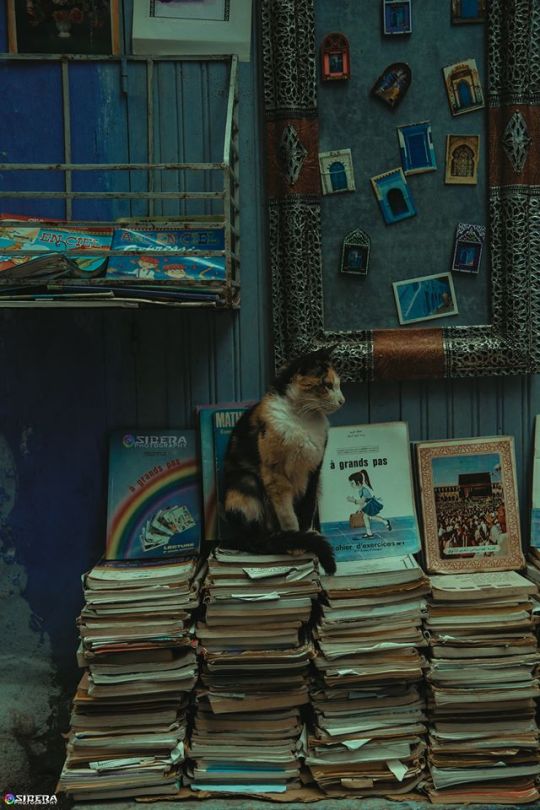
Chefchaouen Cat 💙
photo : Sibera Adil
#maroc#morocco#marruecos#northafrica#chefchaouen#chaouen#chefchaouen the blue pearl#Chefchawen#Chefchouen#cat#cats#Chefchaouen cats#thebluepearl#book#books#catandbook
20 notes
·
View notes
Photo

Chefchaouen, Morocco
24K notes
·
View notes
Text

4 notes
·
View notes
Photo

Cub cat on a staircase in Chefchaouen
© Luisa Puccini
72 notes
·
View notes
Photo

Bruno Barbey, Chefchaouen, Rif Mountains, Morocco, 1985.
4 notes
·
View notes
Photo

Chefchaouen, Morocco
71 notes
·
View notes
Photo






50 shades of blue of Chefchaouen, Morocco 2019
28 notes
·
View notes
